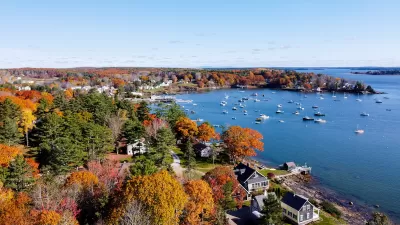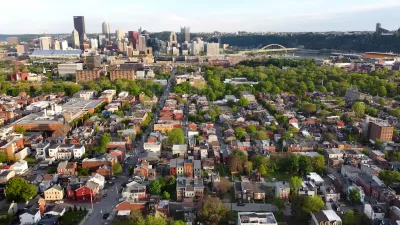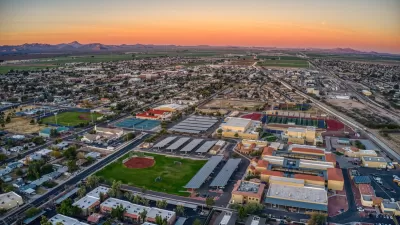As the U.S. experiences its worst drought in over half a century, Kaid Benfield questions the connection with the country's suburban growth patterns over that same period.
With 55% of the U.S. in moderate-to-severe drought, and the situation predicted to only get worse, Kaid Benfield, of the NRDC's Switchboard blog, analyzes sprawl's role in worsening drought and whether smart growth is the answer. "[S]prawling land use can exacerbate some of its impacts," states Benfield, "...the large-lot residential development characteristic of sprawl uses significantly more water than do neighborhoods built to a more walkable scale, contributing to water shortages."
Low-density development can also lead to greater urban runoff, much of it polluted. "[M]ore compact growth patterns with an average of eight houses per acre reduce runoff per household by 74 percent compared to sprawling patterns of one house per acre," finds the author, citing EPA research, "...more compact growth requires less runoff-causing pavement for streets, roads and parking lots than does sprawl."
Is smart growth, with greater densities, the answer to ending drought? Definitely not, but "[w]hile sprawl may not cause drought, nor smart growth solve it," says Benfield, "both need to be considered in the discussion of how to move forward toward a more resilient future."
FULL STORY: How sprawl worsens the impacts of drought and how smart growth can help

Manufactured Crisis: Losing the Nation’s Largest Source of Unsubsidized Affordable Housing
Manufactured housing communities have long been an affordable housing option for millions of people living in the U.S., but that affordability is disappearing rapidly. How did we get here?

Americans May Be Stuck — But Why?
Americans are moving a lot less than they once did, and that is a problem. While Yoni Applebaum, in his highly-publicized article Stuck, gets the reasons badly wrong, it's still important to ask: why are we moving so much less than before?

Using Old Oil and Gas Wells for Green Energy Storage
Penn State researchers have found that repurposing abandoned oil and gas wells for geothermal-assisted compressed-air energy storage can boost efficiency, reduce environmental risks, and support clean energy and job transitions.

Updating LA’s Tree Rules Could Bring More Shade to Underserved Neighborhoods
A new USC study finds that relaxing Los Angeles’ outdated tree planting guidelines could significantly expand urban tree canopy and reduce shade disparities in lower-income neighborhoods, though infrastructure investments are also needed.

California's Canal Solar Projects Aim to Conserve Resources and Expand Clean Energy
California’s Project Nexus has begun generating electricity from solar panels installed over irrigation canals, with researchers and state agencies exploring statewide expansion to conserve water and boost clean energy production.

HHS Staff Cuts Gut Energy Assistance Program
The full staff of a federal program that distributes heating and cooling assistance for low-income families was laid off, jeopardizing the program’s operations.
Urban Design for Planners 1: Software Tools
This six-course series explores essential urban design concepts using open source software and equips planners with the tools they need to participate fully in the urban design process.
Planning for Universal Design
Learn the tools for implementing Universal Design in planning regulations.
Heyer Gruel & Associates PA
City of Moreno Valley
Institute for Housing and Urban Development Studies (IHS)
City of Grandview
Harvard GSD Executive Education
Salt Lake City
NYU Wagner Graduate School of Public Service
City of Cambridge, Maryland





























